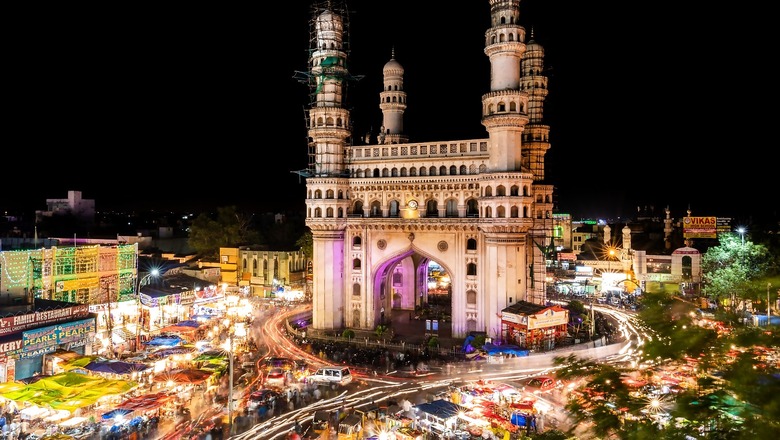
views
The most effective way to destroy people is to deny and obliterate their own understanding of their history—George Orwell
History ought to be a dispassionate account of the events of the past but unfortunately, history often becomes a victim to lopsided narratives. When facts are subverted either to suit political expediencies or the ideological constraints of experts, we deny people, as Orwell says, access to their own history. This is nothing but a veiled attempt to obliterate their identity.
To the contrary, ancient India is replete with examples where every contribution, without judging the quantum of the contribution, is well-documented. For instance, the Ramayana describes the contribution of a squirrel that was carrying pebbles to fill the gaps between the boulders that were laid by Lord Rama’s Vaanara Sena. Eventually, it was the squirrel that ensured that the bridge remained strong and sturdy as the armies of Lord Rama crossed over to Lanka.
Why is it then that our Indian freedom struggle has been subverted in a manner where only a certain history has been highlighted? Why have a slew of marvellous contributions of bravery and sacrifice been undermined? It is with this realization that the Government of India’s Azadi Ka Amrit Mahotsav makes it a point to highlight the contributions of those heroes who made the supreme sacrifice, yet didn’t find enough space in the pages of our history books.
The history of the struggle for the liberation of Telangana from the clutches of the Nizam is one such case in point. It was a momentous event in the history of India’s struggle for freedom. In 1947, India faced a peculiar situation with the Nizam of the Hyderabad State toying with the idea of either merging with Pakistan or becoming an independent country. This was tacitly supported by the British, while the ordinary people of Hyderabad State wanted to merge into the Indian Union. The Hyderabad State at that time contained the whole of today’s Telangana, north-eastern Karnataka and the Marathwada region of Maharashtra.
The period between 1946 and 1948 witnessed horrendous brutalities perpetrated on the innocent and unarmed citizens of Hyderabad State by the Razakars, a private militia led by Qasim Rizvi, along with the Nizam’s army. Undeterred by the quantum of violence, the people revolted. After the massacres of Parkal and Bairanpally in early September 1948, Sardar Vallabhai Patel ordered police action, through ‘Operation Polo’. This compelled the Nizam to surrender and on September 17, 1948, the people of Hyderabad State became a part of the Indian Union.
Although the Bharatiya Janata Party (BJP) has been constantly demanding for this day to be officially celebrated, the state government under the Telangana Rashtra Samithi (TRS) seems to have developed cold-feet, buckling under the pressure of their ally, the Majlis-e-Ittehadul Muslimeen (MIM). In fact, several times between 2001 and 2014, K. Chandrasekhar Rao, the incumbent chief minister of the state, ridiculed various chief ministers of the united state of Andhra Pradesh for not celebrating Telangana Liberation Day. The objections of the MIM, which traces its genealogy to Qasim Rizvi, are understandable. However, the political somersault of the TRS, which on every forum until then asserted the imperative of this celebration, is nothing short of perplexing.
The MIM for its political mileage prefers to look at this event as a fight of Hindus against a Muslim ruler—a stance that actually undermines the contribution of the scores of Muslims who fought against the Nizam and laid down their lives. It was ordinary people like Shoaib Ullah Khan who fought against the Nizam and used his paper, Imroz, to highlight the atrocities of those in power and had to pay the price with his life. Therefore, it was fallacious to view people’s struggles from the prism of region or religion. A close study of the Telangana movement brings two factors to light. First, the fight was not against the Nizam alone but equally against all the feudal lords who by virtue of being agents of the Nizam became instruments of oppression. Second, the fight enunciated the firm will of the people to join the Indian union.
The saga of the sacrifice of the people needs proper documentation for future generations who have an unfettered right to know their history. An official celebration of Telangana Liberation Day is a step towards dispassionate documentation of history, and an attempt to focus on the sacrifices of many unsung heroes who made the supreme sacrifice. The TRS would do well to wriggle itself out of coercion and intimidation by the MIM to fulfil its own promise to the people of Telangana—a state commemoration of September 17 as Liberation Day.
G. Kishan Reddy is the Union Minister for Culture, Tourism and Development of North-eastern Region and represents Secunderabad Lok Sabha Constituency. The views ex-pressed in this article are those of the author and do not represent the stand of this publication.
Read all the Latest News , Breaking News and Ukraine-Russia War Live Updates here.


















Comments
0 comment